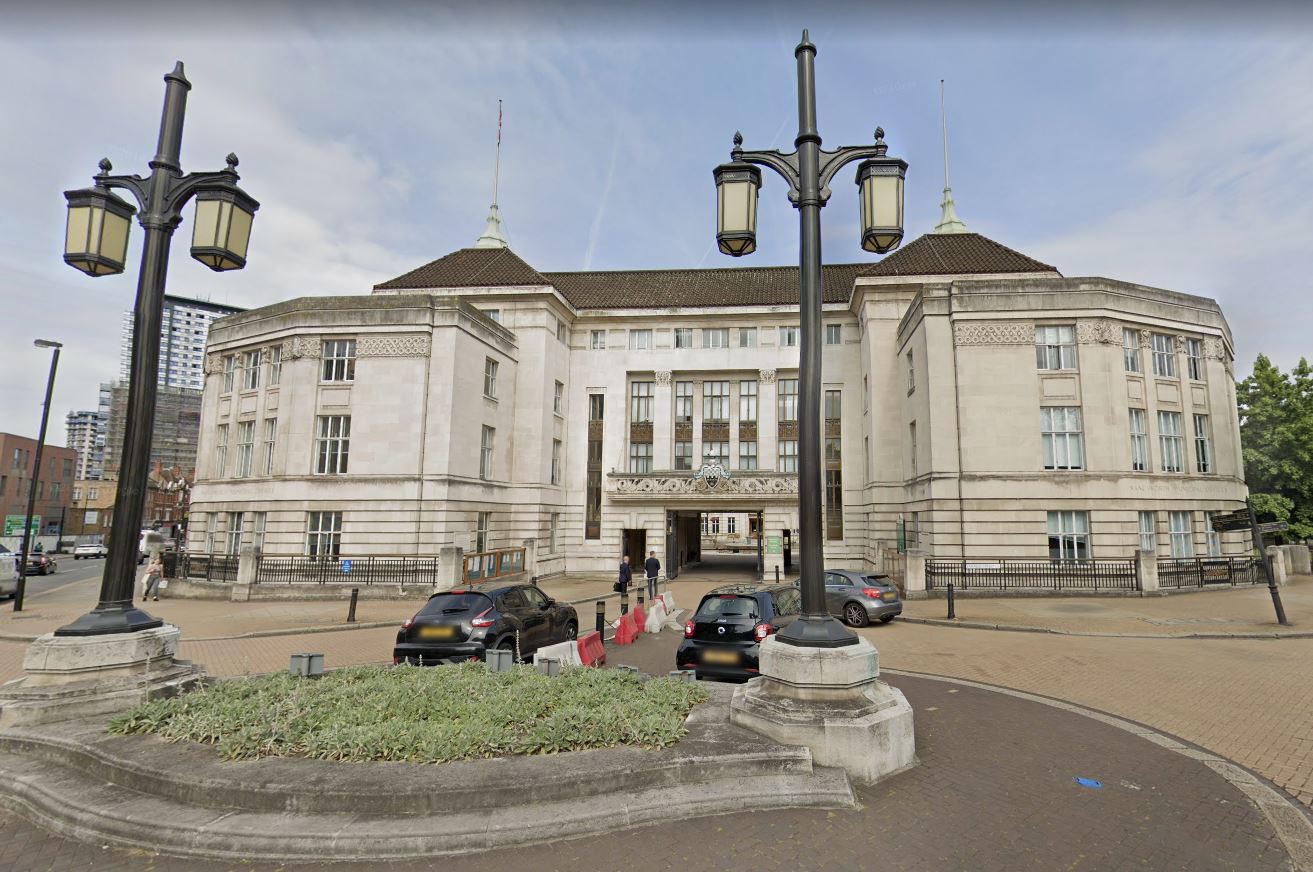Having the lowest Council tax in the country has been for decades the biggest message branded by the Conservatives during Wandsworth Council elections. Whether this has been the reason for their success (implying that people only care about money) has yet to be shown but it has become such a landmark of Wandsworth borough that nowadays the Labour party feel a strong need to display a similar commitment.
In this article, we will analyse the announcement made by the Labour and eventually what is the truth about the low Council Tax, what it really means in term of budget and services and actually… is it possible to change drastically Wandsworth Council’s tax?
Labour = same Low Council Tax
On February 17th, Wandsworth Labour were “making a big campaign announcement” (in the words of their Leader). This was their first big message to launch the campaign and it was… a pledge to “freeze cut your Council Tax next year” (the initial message was to freeze but it was amended to “cut” following the Council’s decision).
In fact, decision to reduce the Council tax by 1% (actually saving a band D taxpayer the staggering amount of… 80p 50p/month!) was supported by the Conservatives and Labour at the Council meeting on January 19th (but only approved by the Council in March).
It has very low impact on the Council’s finances (£500k less money over a £200m revenue budget) and this is always a good message to display during electoral year.

The Labour party is correct to underline that the “in reality Council Tax only pays for a small fraction of local services” but the 5% figure is misleading as it compares apples and pears.
Council’s Tax covers only 5% of the Council’s budget = MISLEADING
In a nutshell (we provide more in-depth analysis at the bottom of this article), the Council Tax Requirement for 2022/23 is £65m while the total of 2022/23 service budgets (also called Revenue Budget) is £200 million at November 2021. Therefore, the share of Council Tax is 32% of the Service (Revenue) Budgets, not 5%.
We are only close to the 5% if we consider the Comprehensive Income and Expenditure Statement (CIES), which is a global “accounting” document that we discussed in detail at the bottom of this article. But think that it includes not only the cost of services but also the maintenance of properties, the rent income, and even the change of valuation of the different assets owned by the Council (similar to your home increasing value, while your income does not change – unless you sell, it does not give you more money, this is just accounting rule!).
This is not directly used in order to calculate the need of Council Tax funding, which is based on the £200m Revenue budget; implying that the Council Tax is only 5% of the budget and therefore negligible is misleading.
Conservatives’ simple message = Low Tax
For once, the local Labour was the quickest to use the Council Tax argument. This is only 5 days later, on February 23rd, that the Conservatives used the Council’s website to release their propaganda story.
But the announcement needed to be reinforced, as the main (only?) argument to vote Tory. A few days ago, we all received a very disguised leaflet in our letterbox: apparently a Council Tax Update that we should not ignore (sic!). While it looked like an important message sent by the Council, this is nothing more than a political leaflet distributed by the local Conservatives, as shown at the back in the small prints.
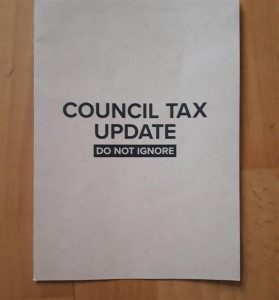
As soon as you understand this is no more than a simple electoral flyer, you can immediately wonder about the purpose of dedicating an entire disguised leaflet with this only message, and then question the information provided.
There is no doubt that Wandsworth borough has got a very low Council Tax. However, the message branded by the Conservatives is more than misleading.
“Your Council Tax is the lowest in the country” = FALSE
First of all, this is not “the lowest” as displayed on the flyer. In fact Westminster tops the league for 2021/22 according to the data collected by PropertyData (£829 for band D and £845 for Wandsworth). Actually there are only two boroughs competing in the “Very Low” category, and for similar reasons as we discussed previously.
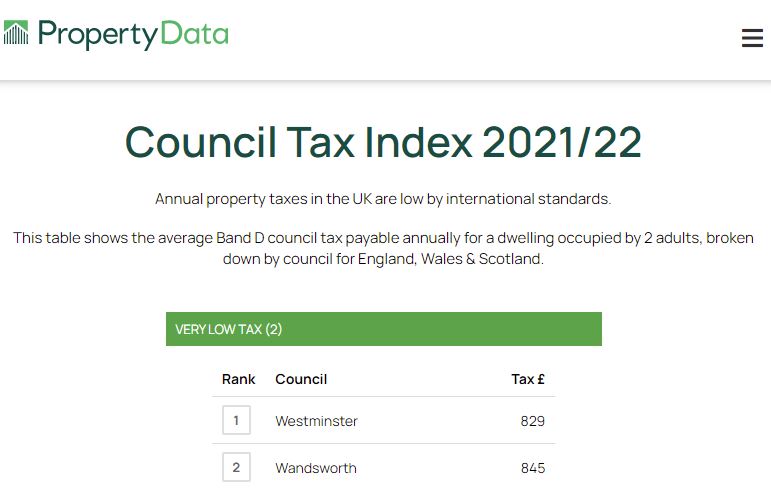
“Conservatives run the Council. That is why your Council Tax is the lowest” = MISLEADING
Just ask a resident in Canterbury in Kent, for example, where the Conservatives party retained an overall majority, but is classifieds in the “Very High” category with £1956 for Band D. Similar case for Dorset, controlled by the Tories with not a single Labour Councillor, but still one of the highest Council Tax in the country (£ 2223 for Band D) .
There is no automatic link between Conservatives and low Council Tax: it depends on the location, the level of investment, the wealth of the population, the age of the residents… etc.
What neither the Conservatives nor the Labour are telling you = The Truth about the low Council Tax
What neither the Conservatives nor the Labour is telling you is the fact that Council tax is actually very difficult to change drastically, so it’s nearly impossible to see a big hike from one year to another.
The truth is that actually Central government has a significant degree of control over both council tax and business rates in England and sets the policy framework in which both operate.
Each year the Government publishes referendum thresholds for council tax increases. The official cap on how much local authorities can increase council tax by is 6% (£3/month based on the current share of Wandsworth Council tax) – this is made up of a 2% council tax rise and an additional 4% for social care and other expenditures (see report 2022-23).
If local authorities wish to increase council tax levels above the threshold, they are required by law to hold a referendum (or get direct approval from the government, which is what the Mayor of London is seeking with a planned raise of 8.8%).
Which means that, independently on whether you have a Labour or Tory Wandsworth Council, and whether you choose to believe or not their pledge, your Council Tax won’t cannot increase by more than ~£30 in the near future. (*)
Wandsworth compensates the lack of Council tax income with grants from developers
In a previous article, we published a detailed analysis of the contribution from property developers to the neighbouring council’s finances.
As we explained, a local authority has several levies to fund their spending. One of them is the Council Tax of course, but you have also the business rates, the government payments and the money paid by property developers.
In a borough like Lambeth, that Wandsworth likes to compare with (they have a similar population of ~320k inhabitants in Lambeth and ~330k in Wandsworth), the Council tax (2019/20) received was £123m with an additional £20m paid by property developers. In comparison, Wandsworth received less than half that Council tax income (£61m in 2019) but more than £55m from property developers.
When you compare over the last 8 years, Wandsworth received a staggering amount of nearly £450m from property developers (£56m/year in average) in comparison to only £77m for Lambeth (£9.6m/year in average). And when you add, over the period, the Council tax collected with payments from property developers, you see that the final amount is actually nearly identical for both boroughs to about £900m.
Is Wandsworth council addicted to property developers’ money? Based on our study, the result is yes. The money coming for approved schemes in Lambeth is less than 10% of the Council tax collected over the 8 year period, while it represents more than 100% in Wandsworth.
One other borough is achieving a similar performance: Westminster. And guess what also unify Wandsworth and Westminster boroughs? They are both competing each year for being the one charging the less Council tax each year.
A honest electoral leaflet reflecting the Conservatives management of the Council should look like this:

Sensible financial management or electoral stinginess?
In 2016, the worst possible rating was handed out to Wandsworth Council’s children’s services after Ofsted inspectors published a damning report. The report (read HERE) said that the service dedicated to children who need help and protection had seriously declined since 2012 and that there was a lack of effective scrutiny by leaders and councillors.
Even worse, the Ofsted inspectors raised concern by the meaning of Wandsworth Council’s performance as the council had only recently self-assessed its services as ‘good’ in June 2015.
More recently, we published an analysis showing that Wandsworth record on affordable housing provision is very poor. The Council has missed 4 out of 5 times its global target of Social/Affordable Rent units for the last 5 years (and every single year if we exclude VNEB) as shown in the tables above. For the whole borough it is about 20%, considerably below the 33% target, and even 50% as it is specified in the emerging Local Plan.
Missing so blatantly the targets while receiving a record level of property developer’s contribution shows the level of the issue.
Some explanation to understand the budget(s)
There is not one financial document for a local authorities, but several, and you need some serious accounting expertise to understand them. The vast majority of Wandsworth residents have no idea of their Council’s budget, and nothing is done to inform them.
For the purpose of this article, we won’t talk about the Balance Sheet (just interesting to know that the current value of the assets owned by the Council, including buildings and equipment, is worth £2.5b), the Movement in Reserves Statement, the Cash Flow Statement, and other specific documents prepared in accordance with proper accounting practices. We will concentrate on the Revenue and Expenditure budget and the Capital Expenditure (Capex).
The two recent documents we have used to understand Wandsworth budget(s) are the Statement of accounts (published 14th July 2021) and the Report by the Director of Resources on the Council Tax Requirement and Council Tax for 2022/23 (paper No 22-68).
The Revenue budget: the Council’s annual budget
The most important is actually the revenue budget. It covers the estimated annual running costs of council services, including employees, premises and supply costs, and income from grants and customer charges. Expenditure is financed by grants including council tax, business tax and authorities’ reserves.
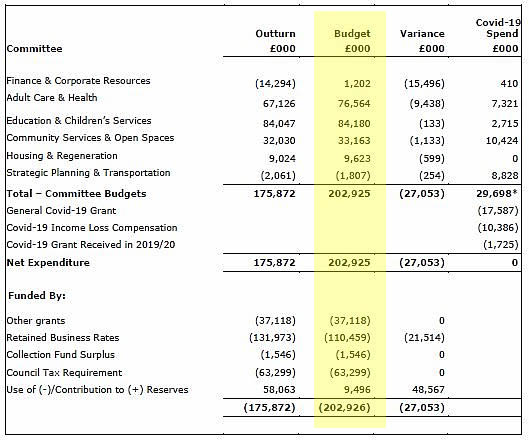
This is the Council budget used to calculated the Council Tax needs for the year (Section 65 of the Local Government Finance Act 1992).
As the Director of Resources says (paper No 22-68):
“After taking account of business rates and central Government support and the use of balances and reserves detailed in paragraph 21, the amount that this Council needs to raise from council tax for its own purposes is as follows”
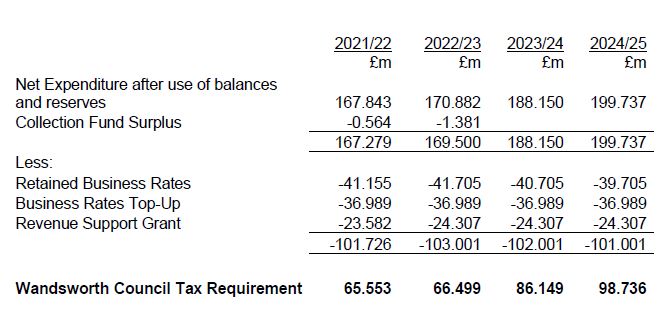
Money received from property developers on a different budget
CIL and Section 106, which are the tax paid by developer based on the size of their scheme (see article HERE) are reported on a different financial statement, called Capital Expenditure (CapEx).
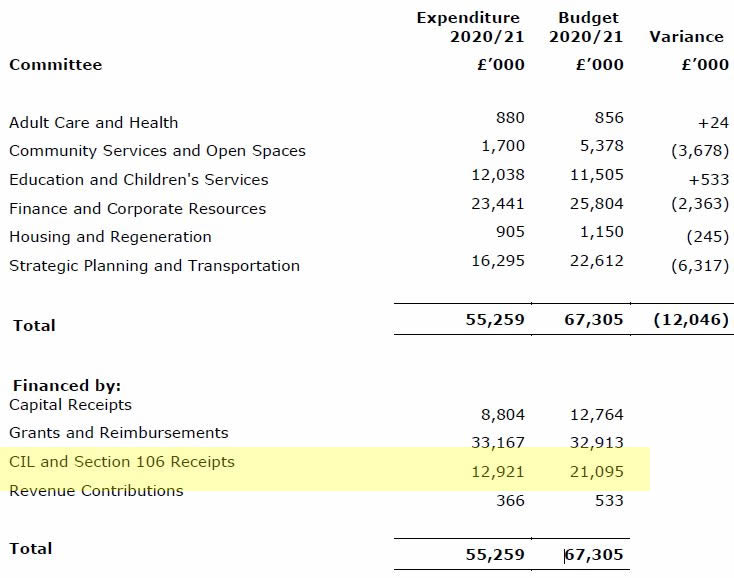
Therefore, in order to appreciate broadly the funds available coming from different taxes and grants, we can aggregate the 2 figures, which gives a global amount of funding of ~ £250m.
Comprehensive Income & Expenditure Account
As you can see from the figures above, the Revenue budget does not take into account the change in asset values and asset investments, the income generated by the Council’s services such as Council rents, Council’s properties… etc.
This is the reason why the accounting view of the budget is much bigger, and reported within the Comprehensive Income & Expenditure Account. It shows the accounting cost in the year of providing services in accordance with generally accepted accounting practices (including the gain and loss in the value of the assets, similar to your house value according to market price), rather than the amount to be funded from taxation.
This global financial statement includes not only the day-to-day functioning of the Council (called the Revenue budget) but also the money received from government and the additional income such as rents from Council tenants, road incomes (fines, closure fees…etc), change of valuation in properties and equipment, etc.
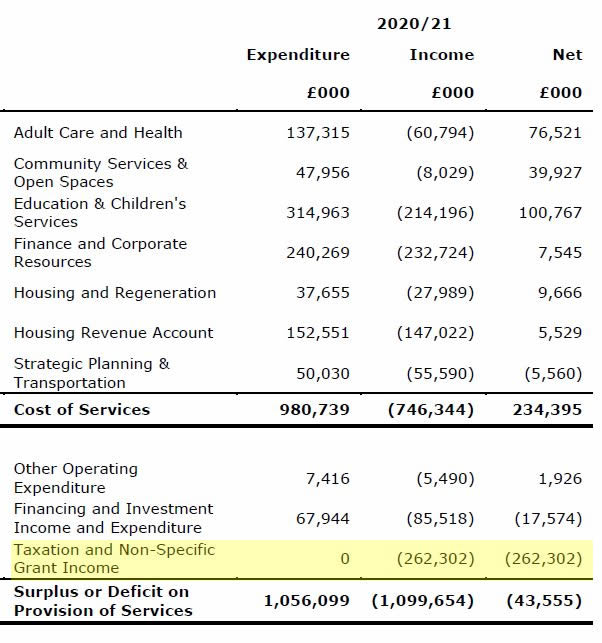
On that financial statement, you will find the Taxation and Non-Specific Grant Income figure that we discussed above, made mainly with the addition of the different taxes on residents (Council Tax), on business (Business Rates), on property developers (CIL and s106) of ~£260m.This is the funding coming from grants and tax that the Council is getting on a year.
In a nutshell, one can consider that the Council is getting its ~£250m funding from 4 roughly equal pillars (sources):
- Council Tax~£65m,
- Business rates ~£75m
- Property developers CIL+s106 ~£55m (see financial statements, showing £40m for 2020/21 and £54m for 2019/20)
- Grants ~£55m (Capital grants and contributions £53m for 2020/21 in the financial statements). Note that according to the Evening Standard report in February, Wandsworth has received £13.3m from the Government in “discretionary funding” to help keep bills down – the 12th biggest amount in the capital.
(*) Your Council tax won’t change in the near future, but it does not mean that both Conservatives or Labour won’t increase it after 2022 (paper 22-68). Actually the latest Report by the Director of Resources on the Council Tax Requirement and Council Tax for 2022/23 shows that (in theory) they expect a need to increase the Council Tax by … 30% in 2023 and a further 14% in 2024.
Whether it will happens is to be seen, and very VERY unlikely to be as much as the forecast is showing anyway, due to the central government constraint…

UPDATE 05/04/2022: Add information about the 4 “pillars” of Wandsworth revenue.


